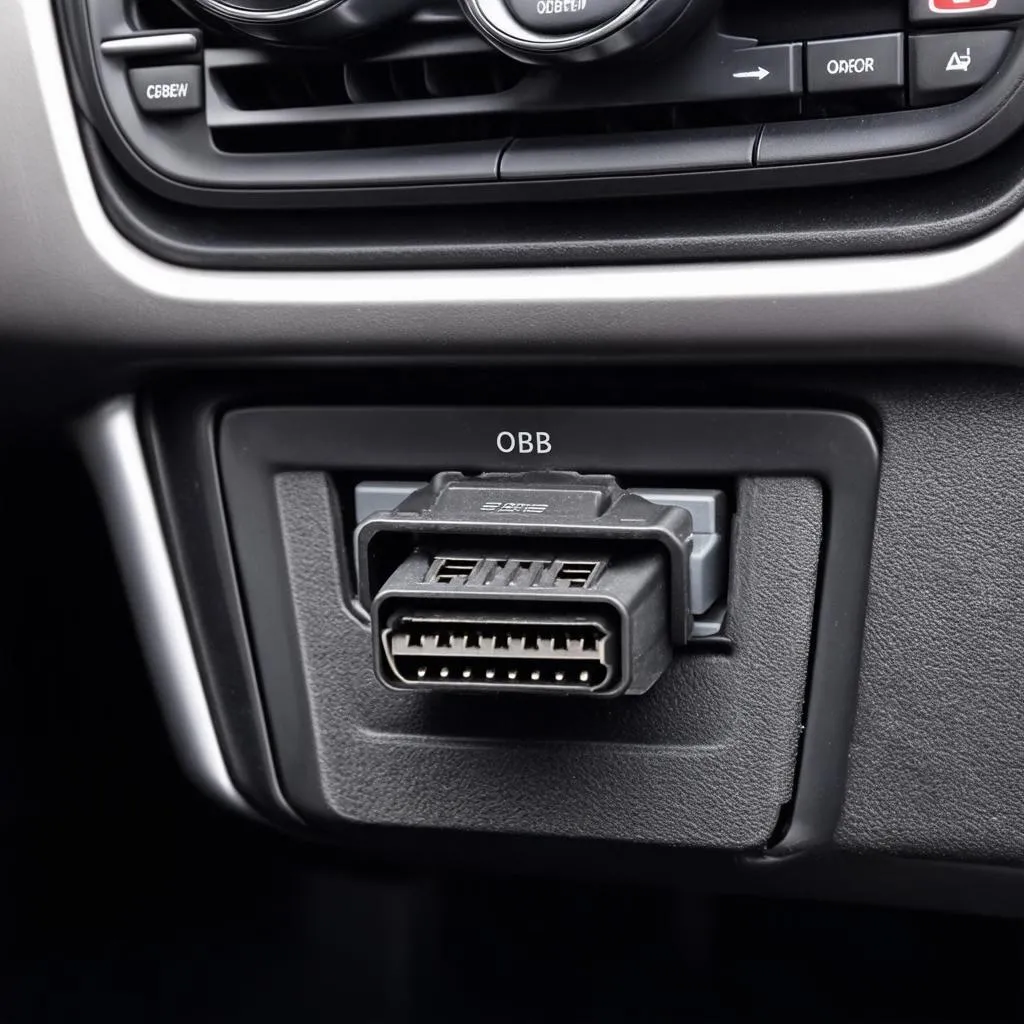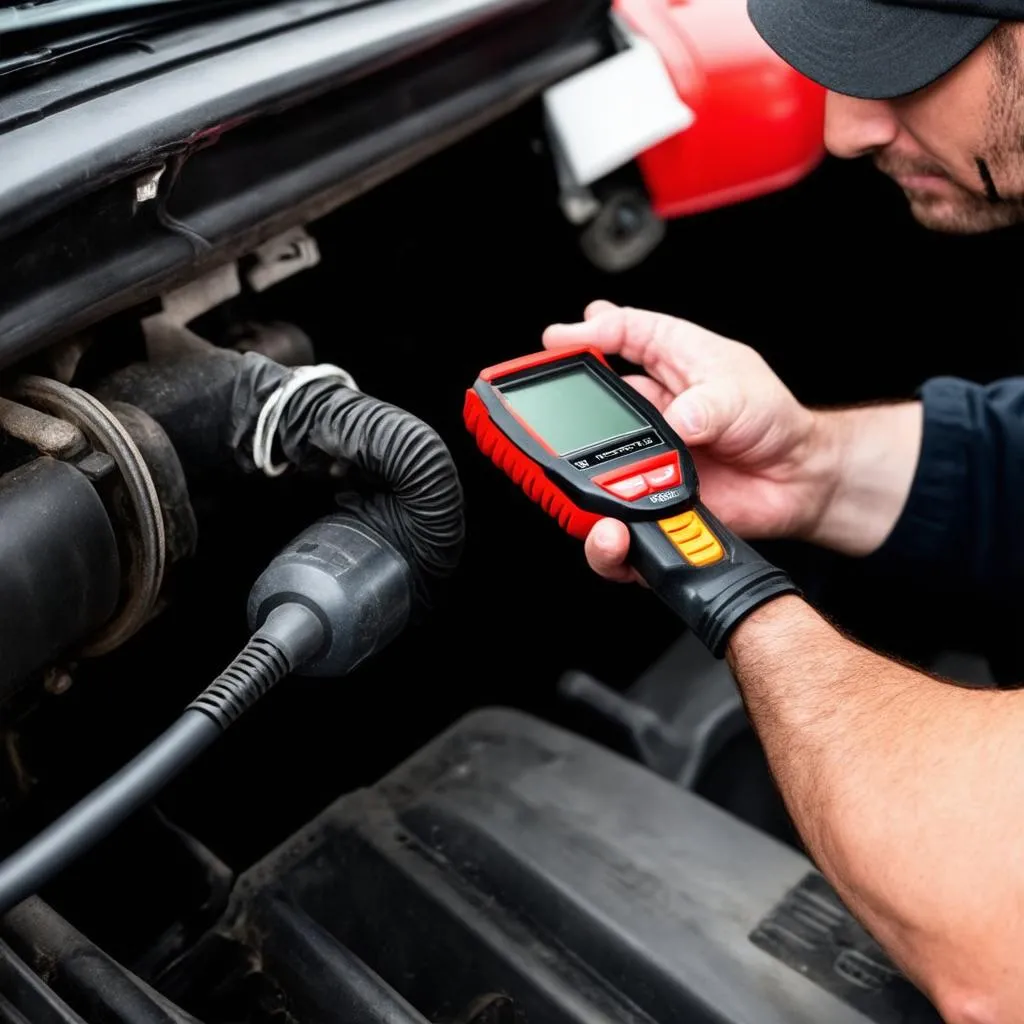Picture this: you’re cruising down the Pacific Coast Highway in your trusty 1999 Subaru Forester, wind in your hair, sun on your face. Suddenly, the check engine light pops on. You love your Forester, but let’s face it, a 1999 model might have a few quirks. Your mind races – is it something serious? How can you even find out what’s wrong? The answer, my friend, might lie in that mysterious port under your dashboard – the OBD port. But does a 1999 Subaru Forester even have one? Let’s dive in and find out!
Understanding the Question: “Does a 1999 Subaru Forester Have an OBD Port?”
This seemingly simple question has layers of meaning, especially for car owners.
- For the average driver, it’s about understanding how to check their car’s health beyond just the dashboard lights.
- From a mechanic’s perspective, it translates to “Can I easily diagnose problems with this car?”
- Economically speaking, it highlights the shift towards standardized diagnostics in the automotive industry, making repairs more transparent.
So, Does It Have One?
The short answer is yes, your 1999 Subaru Forester does have an OBD port! In fact, all cars manufactured for sale in the United States from 1996 onwards are required to have an OBD-II port. This standardization revolutionized car repairs, allowing mechanics and even car owners to access valuable diagnostic information.
Why This Matters: The Power of the OBD Port
That little port under your dashboard isn’t just a random collection of pins and plastic. It’s a gateway to your car’s brain – the Engine Control Unit (ECU). By plugging in an OBD-II scanner, you can:
- Read and understand those pesky check engine lights.
- Access information about your engine’s performance, emissions, and more.
- Diagnose problems yourself, potentially saving you time and money at the mechanic.
 OBD Port Location
OBD Port Location
Common Scenarios for a 1999 Subaru Forester and its OBD Port
Here are a few situations you might encounter:
- Your check engine light is on: This is the most common reason people use their OBD port. A mechanic or a code reader can tell you exactly why that light is glaring at you.
- You’re buying a used 1999 Forester: Always a good idea to plug in a scanner and check for any hidden issues before you buy.
- You want to monitor your car’s performance: Some OBD-II scanners allow you to track data like fuel economy, engine temperature, and more.
Troubleshooting Your OBD Port
Having trouble connecting to your 1999 Forester’s OBD port?
- Check the location: It’s usually located under the driver’s side dashboard, near the steering column.
- Make sure the connector is properly seated: Sometimes it just needs a little wiggle.
- Check your scanner’s compatibility: Not all scanners work with all cars.
 OBD Scanner in Use
OBD Scanner in Use
Beyond the 1999 Subaru Forester: Other OBD-Related Questions
You might also be wondering:
- Can I install an aftermarket car alarm on my 1999 Forester? Yes, and you might need to access the OBD port for some of the wiring.
- What’s the difference between OBD-I and OBD-II? The 1996 and later OBD-II system is more standardized and provides more detailed diagnostic information.
For more information on OBD codes and troubleshooting, check out our articles on BAFX OBD-II Code Reader and How to Fix OBD Code P0456. You can also learn more about locating the OBD port in different car models.
And if you’re curious about the OBD port on a different Subaru model, take a look at our article on the 2011 Subaru Forester OBD connector.
Need More Help?
Got more questions about your car’s diagnostics or need help finding the right tools? Don’t hesitate to reach out! Our team of automotive experts is available 24/7 via WhatsApp at +84767531508. We can help you troubleshoot problems, recommend the best diagnostic tools, and even provide installation support for various software.
The world of car diagnostics can seem daunting, but remember, knowledge is power. Understanding your car’s OBD system gives you the power to stay on top of maintenance, diagnose problems early, and potentially save yourself from expensive repairs down the road. Happy driving!